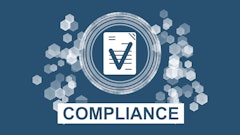By John Snow
In the automotive industry the biggest source of profits doesn't come from new car sales. It's right under the hood in parts and service.
As revenue and profits from car sales come under pressure, progressive automakers are investing in technologies that improve their post-sales parts and service relationship with car dealers where lucrative profit streams reside. Consider the following: According to the National Automobile Dealers Association's (NADA) industry-analysis division, in 2005 58.5 percent of automobile dealer profit came from the service-and-parts department, compared with 14.5 percent from new-car sales. Furthermore, of the $85.2 billion in service and parts sales at franchised dealerships $48.9 billion was attributed to parts, which helps both dealers and automakers alike.
To understand the importance of parts revenue to the original equipment manufacturer (OEM) it is interesting to note that a 2004 Accenture study of one of the largest automakers revealed that sales of $9 billion in parts and services contributed $2 billion in profits. While by comparison, car sales of $150 billion produced profits of just $1 billion for the automaker. In fact, some industry experts indicate that spare part sales represent less than 5 percent of total revenues but more than 30 percent of profits. Clearly parts and service is big business.
As it stands now, many automotive OEMs connect with their dealers via a paper-based system where service and vehicle updates take weeks to get to dealerships. And in those cases where the automaker does provide electronic data, the job of creating and distributing this information is outsourced to a third-party company, outside the control of the OEM. The resulting delays have a negative impact on first-time-fix rates, a key performance indicator (KPI) used by OEMs and dealers to track customer satisfaction and predict warranty costs. It also creates inefficiencies in the service bay where, instead of turning wrenches, technicians spend up to 40 percent of their time turning pages looking for the right parts and service information.
However, even with these inefficiencies, the numbers clearly indicate that automakers and dealers make more profit from servicing cars than from selling them. Factor in that more than half of the parts used to repair today's cars come from third-party vendors, rather than the OEM, and you can see why leading automakers are aggressively pursuing new strategies to increase their share of the parts and service business.
One important step toward helping automakers generate more revenue from parts and service operations is the implementation of Web-based service information and parts ordering systems. These efforts have resulted in the creation of an integrated service bay that optimizes the technician's workflow and provides them with real-time access to the latest parts, repair and pricing information for the cars and trucks they are fixing. OEMs that implement an integrated service bay deliver benefits to the entire dealer community by helping them realize greater efficiency and consistency in service execution and parts procurement. Such gains bring operational flexibility to service departments, enabling them to pursue more cross-sell/up-sell opportunities and to increase service throughput. This means customers have their cars back on the road faster and the OEMs and dealers realize increased service and parts revenue and lower warranty costs as measured by improved first-time-fix-rates.
Several automakers are leading the way and taking control of their parts and service operations with this type of innovative aftermarket technology.
In the summer of 2005, Volvo Cars went live with a worldwide system called Vehicle Information and Diagnostics for Aftersales (VIDA) built with software from Burlington, Mass.-based Enigma. The system is available in 17 different languages and ties together all of the resources technicians rely on everyday, including service manuals, electronic parts catalogs (EPC) and service bulletins. The solution also ties into dealer management systems (DMS) to streamline parts ordering, inventory management and other financial processes.
In the fall of 2005, Ford of Europe turned to Enigma's software to roll out a browser-based electronic parts catalog — called "FordEcat" in more than 42 countries in Europe and the Middle East. Also available in 17 different languages, the "FordEcat" enables technicians to receive up-to-date information on parts and service for 45 different car models. In less than one year, more than 65 percent of its dealer network in Europe and the Middle East has chosen the "FordEcat" system, solidifying Ford's aftermarket revenue stream and establishing centralized management of service and support content.
In the spring of 2006, Ford North America went live with the Ford Catalog Advantage (FCA), also based on Enigma. FCA, which is a Ford product offering, delivers critical parts information for all Ford and Lincoln Mercury vehicles to the parts managers at 4,500 dealers throughout the US. FCA integrates to the major dealer management systems (DMS) in use in North America, ensuring that parts decisions are being made on accurate and up-to-date information. The positive response from the dealer community is validated by the fact that in less than one year almost 50 percent of dealerships are subscribing to the new FCA offering.
And while the deployments at Volvo and Ford continue to ramp up, each one represents a significant head start on their automotive competitors. In the past, many companies, including automakers, focused on product-based revenue rather than spare parts and services. But that trend is changing. According to a September 2005 report from the Aberdeen Group one of the main market pressures driving automakers and other OEMs to increase their service-based revenue is the shrinking profit margin of product sales.
Given the current economic environment, the automotive industry is now diversifying its approach to increasing revenue and profits. By implementing new technology, OEMs can improve the financial picture by optimizing the delivery of service and parts for the vehicles they manufacture. In an age when automakers need to enhance post-sales revenues, that's both a competitive differentiator and an opportunity for growth.
About the Author: John Snow is the vice president of marketing and business development for Enigma, an aftermarket service and support technology company.


























